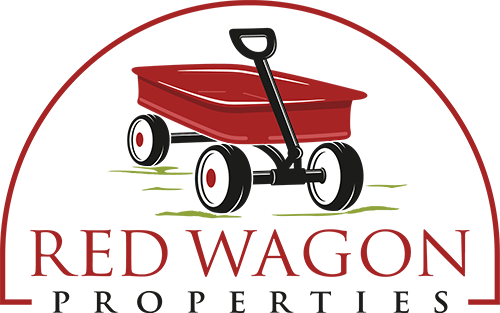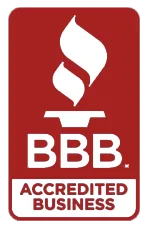Saving for a down payment on a home is a critical step in home-buying. It requires careful planning, disciplined saving, and a clear understanding of your financial goals. This guide will help you navigate the basics of saving for a down payment, how much to save, and what to expect along the way.
The Basics
A down payment is the initial payment you make when purchasing a home, typically expressed as a percentage of the home’s purchase price. The size of your down payment affects various aspects of your mortgage, including the loan amount, interest rate, and monthly payments. Larger down payments often result in better loan terms and lower monthly payments, as they reduce the lender’s risk.
Understanding the basics of down payments is crucial. Traditional mortgages often require a 15-20% down payment, but many lenders offer loans with lower down payment requirements, sometimes as low as 3% for first-time homebuyers. Government-backed loans, such as FHA, VA, and USDA loans, also have specific down payment requirements and can be a viable option for those who qualify.
Before you start saving, it’s important to assess your financial situation. This includes evaluating your income, expenses, debt, and savings. Creating a budget can help you identify areas where you can cut back and allocate more money toward your down payment fund. Additionally, checking your credit score and addressing any issues can improve your chances of securing a favorable mortgage.
How to Save
Saving for a down payment requires a strategic approach. Start by setting a clear savings goal based on the price range of homes you are considering and the required down payment percentage. Once you have a target amount, create a timeline for achieving this goal. Breaking it down into smaller, manageable milestones can make the process less daunting.
Consider automating your savings to ensure consistency. Set up a dedicated savings account and arrange automatic transfers from your checking account. This way, a portion of your income goes directly into your down payment fund each month without the temptation to spend it. Additionally, look for ways to boost your savings, such as cutting unnecessary expenses, finding additional sources of income, or using windfalls like tax refunds and bonuses.
Exploring down payment assistance programs can also be beneficial. Many states and local governments offer grants, loans, or tax credits to help first-time homebuyers save for a down payment. Research programs available in your area to see if you qualify and how they can supplement your savings efforts.
How Much to Save
Determining how much to save for a down payment depends on several factors, including the home price, loan type, and your financial situation. Generally, aim to save at least 5% to 20% of the home’s purchase price. A larger down payment reduces your loan amount, potentially lowering your monthly mortgage payments and overall interest costs.
For example, if you’re looking to buy a $300,000 home, a 20% down payment would be $60,000, while a 10% down payment would be $30,000. Remember that a larger down payment can also help you avoid private mortgage insurance (PMI), which is typically required for down payments of less than 15% and adds to your monthly costs.
In addition to the down payment, factor in other upfront costs, such as closing costs, which can range from 2% to 5% of the home’s purchase price. It’s important to save enough to cover these expenses to avoid financial strain during home-buying.
You Don’t Always Need 20%
Contrary to popular belief, you don’t always need a 20% down payment to buy a home. Many lenders offer mortgage options with lower down payment requirements, making homeownership more accessible. For instance, FHA loans require as little as 3.5% down, while VA and USDA loans may offer zero-down-payment options for eligible buyers.
These lower down payment options can be particularly beneficial for first-time homebuyers or those with limited savings. However, it’s important to understand the trade-offs. Smaller down payments generally result in higher monthly payments and may require PMI, increasing overall housing costs.
Assess your financial situation and long-term goals to determine the best down payment strategy for you. While a lower down payment can help you get into a home sooner, a larger one can provide more financial stability and lower your long-term costs.
What This Means for You
Saving for a down payment is a significant financial commitment, but it’s a crucial step toward homeownership. By understanding your savings goals and implementing a strategic plan, you can gradually build the funds needed for your down payment. This process requires discipline, patience, and a clear understanding of your financial priorities.
Achieving your down payment goal can provide a sense of accomplishment and financial security. It demonstrates your ability to save and manage your finances effectively, which are essential skills for successful homeownership. Additionally, reaching your down payment goal positions you as a strong candidate for mortgage approval, increasing your chances of securing favorable loan terms.

What to Expect
The journey to saving for a down payment involves both challenges and rewards. Expect to make sacrifices and adjustments to your spending habits. It’s important to stay motivated and focused on your goal, celebrating small milestones along the way. Remember that the home-buying process involves additional steps, such as securing a mortgage, finding the right property, and navigating the closing process.
Working with a financial advisor or mortgage professional can provide valuable guidance and support. They can help you create a realistic savings plan, explore mortgage options, and understand the overall home-buying process. Being well-prepared and informed can make the journey smoother and more manageable.
Conclusion
Saving for a down payment on a home is critical to achieving homeownership. By understanding the basics, setting clear savings goals, and exploring different mortgage options, you can successfully save for a down payment. While the process requires discipline and commitment, the rewards of homeownership are well worth the effort.
If you decide to continue renting while you save, partnering with a professional rental management company, like Red Wagon Properties, can enhance your renting experience. We provide comprehensive property management services, ensuring your rental home is well-maintained, and your tenancy is hassle-free.
With the right support and planning, you can achieve your homeownership goals and enjoy the benefits of a stable and comfortable living environment.










